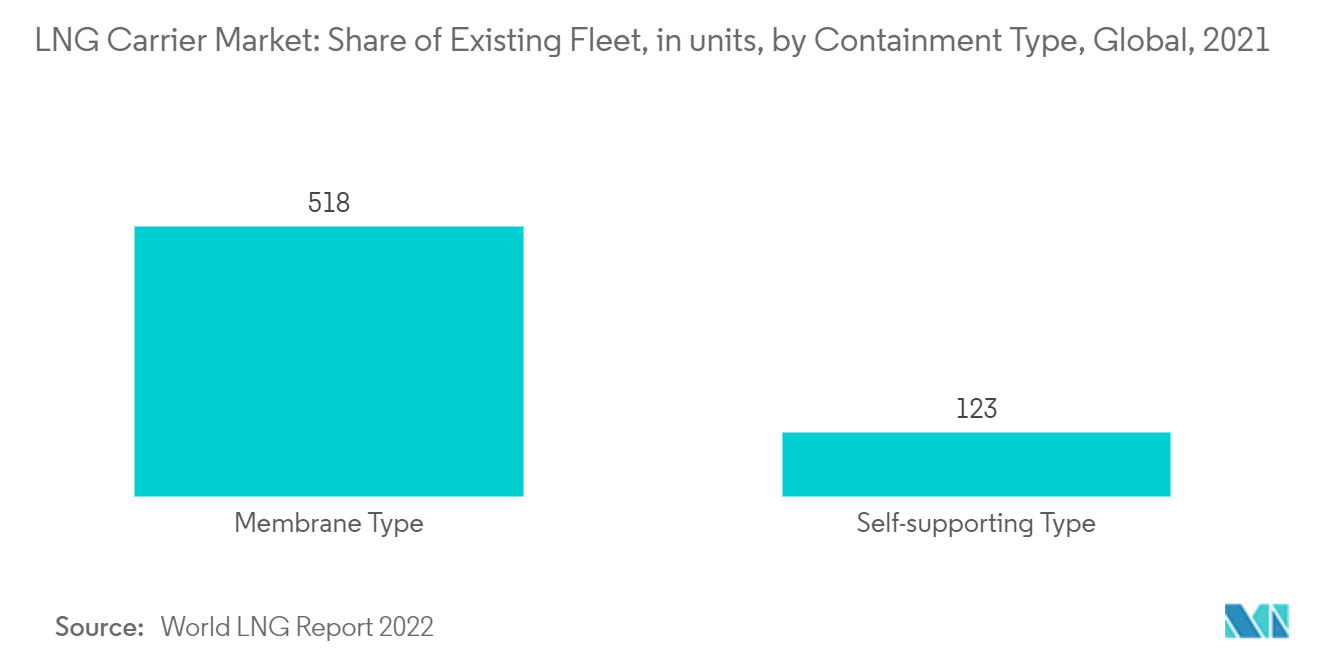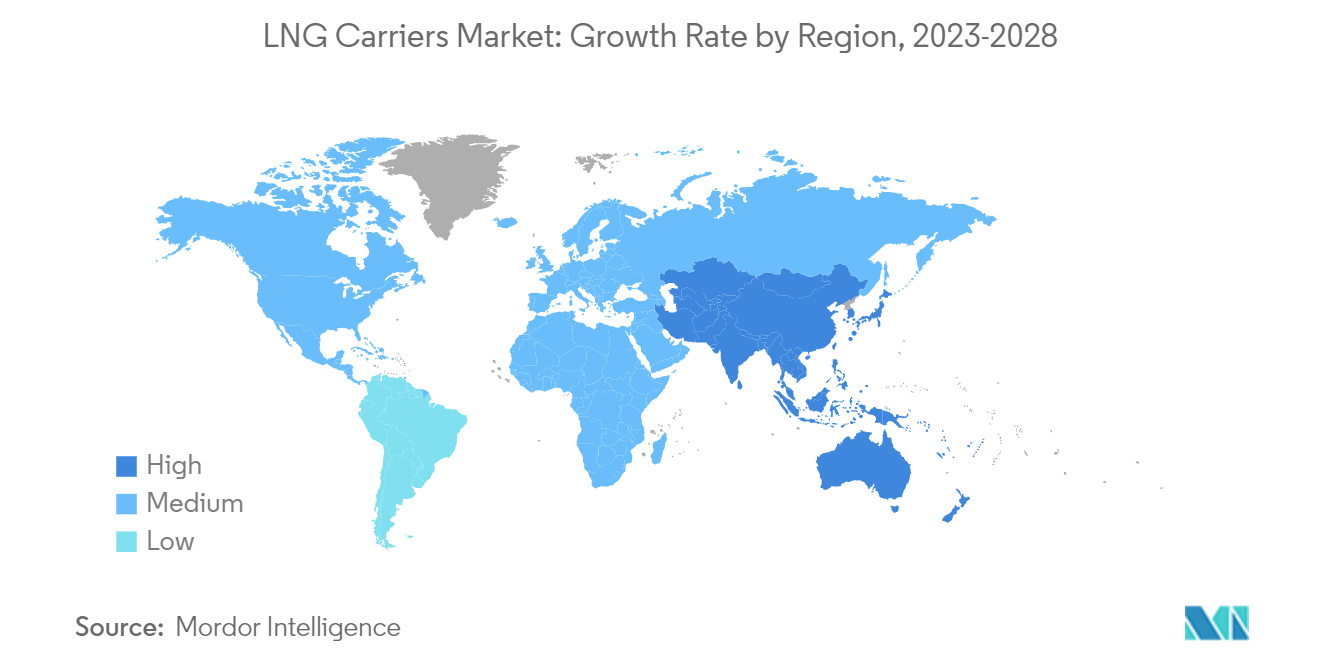Market Trends of LNG Carriers Industry
Membrane-Type Containment to Dominate the Market
- The membrane-type segment held the largest market share owing to its higher carrying capacity and other advantages. This containment segment is expected to dominate the global market throughout the forecast period.
- Gaztransport and Technigaz (GTT) designed the most common membrane tank systems. Several GTT systems have already been implemented onboard LNG carriers for many years, and other designs from different companies have been developed.
- Moreover, in December 2022, Samsung Heavy Industries (Shi) awarded Gaztransport & Technigaz (GTT) two contracts for the tank design of seven new LNG carrier vessels. The contracts were awarded on behalf of both a European and an American shipowner. Each LNG vessel will be 174,000m3 in size. The vessels are expected to be delivered in the first and fourth quarters of 2026 and 2027.
- By 2021, 518 units of the active fleet had a GTT membrane-type containment system which accounted for 81% of the current fleet count. It continued to lead the order book as the preferred containment option.
- Due to technological advancements, membrane-type containment has a superior capacity to bear the immense pressure of LNG and its compact shape to carry large LNG volumes compared to moss-type containment.

Asia-Pacific to Dominate the Market
- The Asia-Pacific accounted for the largest LNG carrier market share due to increased demand for natural gas because of high industrial growth and the adoption of clean energy sources. Therefore, the region is expected to continue its dominance in the market throughout the forecast period. Most of the demand in the region came from China.
- Meanwhile, China has accelerated its policy of reducing emissions and pollution through coal-to-gas conversion, increasing its LNG consumption by 15.0%. Several other Asian countries and regions, notably South Korea and Chinese Taipei, will dramatically expand LNG imports in 2021. As of 2021, Asia Pacific accounts for 72% share of total global LNG imports
- China imported 109.5 billion cubic meters of liquefied natural gas (LNG) in 2021, an 16.8% increase compared to 2021. Therefore, China became a vital contributor to the global LNG industry's development and prosperity. Net LNG imports in Asia Pacific in 2021 increased by 7.3%.
- The growing LNG consumption by various end-user industries, such as manufacturing, petrochemicals, and fertilizers, is on a consistent rise in China and South Korea. Japan prevalently consumes LNG for power generation. These countries are expected to aid in the growth of the Asia-Pacific market.

